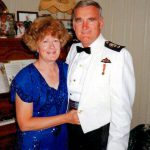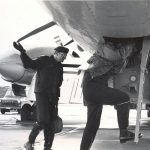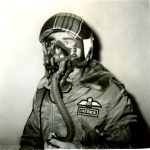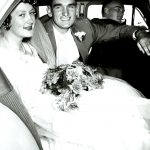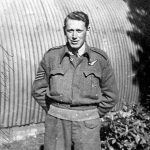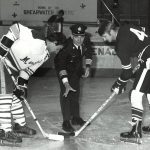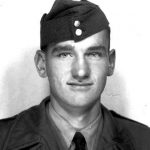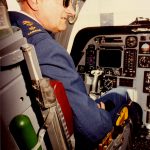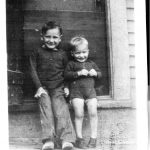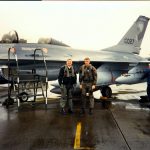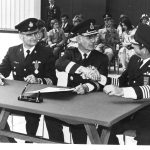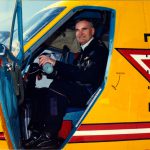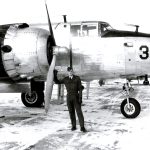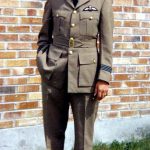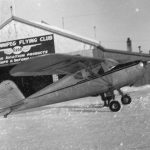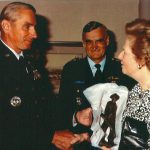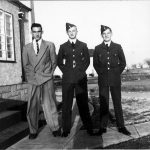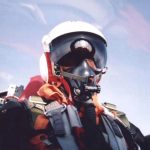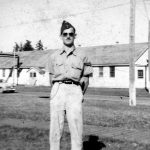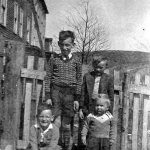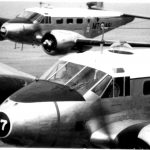Ian Patrick was born January 29, 1938, in St. John’s, Newfoundland. He and his siblings grew up in the shadow of war, as St. John’s was a busy port city during the Second World War. His father was a railroad machinist who worked in the dockyards: his war was spent on the home front, working to keep the ships of the Allies afloat. The family provided accommodations for many sailors during the war, and on one tragic night, a sailor fell asleep with a cigarette alight. The family’s home burned down that night, and one of Ian’s brothers was killed. When the war concluded, Ian’s parents decided to leave Newfoundland, and they headed west and settled in Winnipeg. Ian enjoyed life in Winnipeg; he did well at school and became involved in the Air Cadets, where he began to develop what would become a lifelong passion, and one that led him into the RCAF Auxiliary at age 16. The Cold War was at its height at that time, and Canada was dedicating many resources to building radar installations across the country, and Ian’s training went in this direction, as he set off for Clinton, Ontario. A variety of other radar posts followed, against the backdrop of the 1950s Red Scare and arms race, and Ian’s career path continued to be pushed along by events. He became a junior officer in this period, and was sent to Centralia, Ontario, and that’s where Ian’s flight training began. He began what would be a lifetime of flying, on countless types of aircraft. Some of the initial stops in these early days were on the Canadian Prairies, and it was here that he met his wife Joan. Ian loved flying, and he looked forward to becoming a jet fighter pilot, but command had other ideas, and he was transferred to Transport Command not too long after this. The next stop was Canada’s east coast: Ian found himself in Nova Scotia, at CFB Greenwood, and the new aircraft on the agenda was the Argus, a sub chaser. Ian was now at the heart of the Cold War, tracking Soviet subs all over the Atlantic. He recalls several intense experiences from those years, including Soviet missiles locked on his aircraft and dangerous weather and landings. On Canadian soil, his rise through the ranks continued, as he was promoted to major, lieutenant-colonel and colonel as the 60s ended and the 70s began; he was also base commander at CFB Shearwater. He spent some time in Europe during this stretch, studying in London at the Royal College of Defence Studies, where he had the chance to see Eastern Europe behind the Iron Curtain . He would return to Canada, where he would be promoted to Brigadier-General, and more high-level posts would follow, including Commander Maritime Air Group and in 1986, Chief of Staff (Operations) for the Air Force (then called Air Command under the unified Canadian Forces system), responsible for the oversight of all Air Force operations, training, research and development, intelligence, and military police. All the while, he continued to fly and he avoided the bureaucratic postings to Ottawa, preferring to be a commander in the field. Nearing the end of his career, in 1988 Ian was posted to Colorado Springs, USA as a Command Director North American Aerospace Defense Command and then promoted to Major-General in1989 and appointed Director NORAD Combat Operations. He retired in 1992 to Nova Scotia, where he and his wife have built a home near CFB Greenwood, where he is involved in the aviation museum and numerous community ventures. Ian Patrick was interviewed by Peter Hull and Scott Masters via zoom in the pandemic summer of 2020.
Videos
Click next video below to keep watching
- 1. Growing up during World War Two- Life in St. John's
- 2. Winnipeg
- 3. Joining the Air Force
- 4. End of High School and CFB Beausejour
- 5. Centralia
- 6. Claresholm
- 7. Claresholm and the Events of the 1960s
- 8. Transport Command
- 9. Integration
- 10. The Arctic
- 11. Warning Lights; On to Australia
- 12. Shearwater; The Maritime Warfare School
- 13. A Year in London; Promoted to Brigadier-General
- 14. A Base Commander; The Maritime Air Group
- 15. Bases and Aircraft
- 16. Return to Winnipeg
- 17. NORAD
- 18. The Canadian and American Systems
- 19. Tense Moments
- 20. Involvement in Politics
- 21. Retirement
